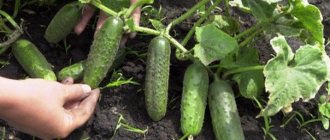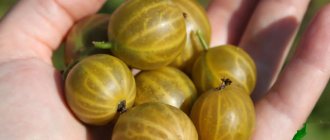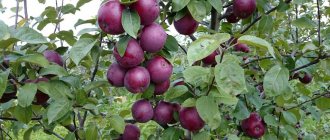Features of growing climbing roses in the Urals
The Ural region is characterized by difficult weather conditions for roses:
Climbing roses for the Urals. The Rosarium Uetersen rose bush reaches a height of 3.5 m, but can withstand pruning up to two meters.
- long frosty winters (up to -40°C);
- short summer;
- cold piercing winds;
- high snow cover;
- uneven distribution of precipitation;
- recurrent spring frosts.
Moreover, on the plains of the Urals (west of the Ural Mountains) the climate is milder and more humid. The natural conditions of the Trans-Urals (east of the Ural Range), where much less precipitation falls, are noticeably harsher, with pronounced continental features. Warmth-loving climbing roses in such conditions do not fully reveal their varietal qualities: they do not reach the declared height, do not bloom again, and do not fully open their buds. Therefore, for cultivation in the Urals, they choose adapted varieties of roses adapted to the listed conditions: winter-hardy, unpretentious, with high immunity.
author: Dr. D.G. Hessayon
Characteristics of roses
Canadian. Roses of this species are resistant to cold, disease and harmful insects. The unique flowers were bred artificially in Canada. In Russia, Canadian roses are rare, but if you try hard, you can find nurseries where they are sold. Canadian roses bloom long and profusely; they are ideal for growing in the Urals. The most popular variety is called “David Thompson”.
Teahouses. Roses of this variety are unsuitable for growing in the Urals. Flowers are heat-loving and do not survive in harsh climates. Hybrid tea varieties emit a refined aroma. They bloom for a long time, but are susceptible to attack by harmful insects. Today, breeders are developing many varieties, the most famous of which are Gloria and Limbo.
Compact. This species can be confused with tea roses. Compact roses do not exceed 45 cm in height. They do not make high demands on growing conditions and bloom for quite a long time. Miniature roses growing in cold climates need to be covered. The most popular variety is Mandarin.
Shrubs. This species grows actively and produces a very delicate aroma. A common variety is Charles Austin.
Climbing. These roses grow up to 5 m! To keep them in the garden, you need to install supports. The advantage of this species is that it can bloom 2 times a season. Varieties of ornamental plants are divided depending on the diameter of the flower. If the bud is large, it produces a more intense aroma. The most popular variety is Rosarium.
Review of varieties of climbing roses recommended for the Urals
The table provides a description of the varieties that are traditionally popular among Ural gardeners:
All varieties presented in the table respond positively to decorative pruning of faded buds and tying. Moreover, some climbing roses, in conditions of a short growing season, perform better when grown as bushes
Of all the listed varieties, “Super Excelsa” is the most flexible. The bush is easy to form, the lashes can be easily removed and bent down for the winter.
Diseases and pests
Aphids and spider mites can live on climbing roses. In the case where there are not very many aphids on the plant, it is recommended to try to get rid of them using folk remedies. So, you can remove insects from the plant manually. To do this, you need to pinch the part of the plant on which the aphid is located with your fingers and remove it. Don't forget to wear gloves. But this method can only be used at the very beginning of infection. If there are a lot of insects, then removing them manually will be ineffective. In this case, it is recommended to make a soap solution.
The soap should be crushed using a grater, poured into a container, where water should be poured. Let the solution sit as soap takes time to dissolve. Strain it and treat the plant with a sprayer. If after treatment the insects still remain, then you need to buy an insecticidal agent in a special store, which should have o. For processing in this case, you need to choose a calm, sunny day. Spider mites can settle on a rose only during a hot, dry period, and only when the plant is watered very rarely. Such insects live on the underside of leaves. They feed on plant sap and entangle the leaves with a thin web. An infected rose's leaves turn green-silver.
Very often, to destroy such ticks, an infusion prepared with wormwood, shag, yarrow or tobacco is used. 3 days after treatment with this infusion, 80 to 100 percent of the pests should die. To prepare an infusion of wormwood, you need to pour 500 g of freshly picked wormwood into a wooden container. You need to pour a bucket of cold water in there. When the mixture has been infused for half a month, it is filtered and diluted with water in a ratio of 1:10. It is necessary to treat both the plant itself and the surface of the soil around it. If you want to get rid of insects in the near future, then you will need to purchase Fitoverm. You can re-treat a couple of weeks after the first. Before you start processing with this product, you need to study the instructions attached to it, which indicate the features, as well as the required dosage.
Cicadas, thrips, roseate sawflies, and leaf rollers can also harm climbing roses. However, if you take care of the flower, following all the rules, they will not settle on it. As a preventive measure, plant marigolds in close proximity to the rose; they will be able to protect this plant from most pests. Also, preventive measures should be taken in autumn and spring. To do this, the bushes need to be treated with a Bordeaux mixture sprayer.
For roses, diseases such as bacterial cancer, gray rot, koniothyrium, powdery mildew, and black spot pose a great danger.
General principles of caring for roses in the Urals
It should be remembered that even the variety most adapted to weather conditions requires appropriate care and adherence to agricultural technology . For climbing roses, the same fertilizing is recommended as for other variety groups. During the season you need to feed at least three times.
- At the end of May and beginning of June, organic matter and mineral nitrogen fertilizers are applied.
- In July they are fed with complex nitrogen-phosphorus-potassium fertilizers.
- In early August they feed with phosphorus and potassium (
Useful properties and uses of roses
Remember that you can grow roses on your site not only for aesthetic purposes, but also for practical ones. It has long been known about the healing effects of roses on the human body, if you learn to use it correctly. Since ancient times, the following effects of this flower on the body have been noted:
- anti-inflammatory effect;
- wound healing effect;
- calming effect;
- restorative effect.
Traditional healers learned to prepare infusions, ointments, decoctions, rose oils, rose water, etc. from roses, mainly from its petals. A rose on your site can become an assistant in the treatment of diseases such as bronchial asthma, rhinitis, allergic rhinitis, stomach ulcers, various inflammatory diseases of the gastrointestinal tract, tonsillitis, tonsillitis, respiratory diseases, conjunctivitis, radiation damage to the skin, necrosis and many other ailments. Rose is widely used not only in folk medicine, but also in cosmetology and cooking. The rejuvenating effect of various masks, tonics, and creams based on roses has long been known to women since ancient times.
Typical mistakes gardeners make when growing roses in the Urals
- There is an opinion that roses planted in the summer, in July-August, withstand wintering better, since they have time to get stronger before the onset of frost. This is absolutely not true. About a month after planting, having exhausted its supply of nutrients from its own root system, the seedling actively begins to grow. Additional forces are required to form an increase. In the short Ural summer there is not enough time for young shoots to mature. As a result, the plant goes into winter weakened, unripe stems rot, rot, and cause the death of the entire plant. The optimal time for autumn transplantation is the second half of September, for spring transplantation - the end of April.
- Beginning gardeners often set up a flower garden according to the recommendations of landscape designers taken from foreign magazines. This approach is not acceptable for the Ural region. The location of the rose garden should be planned according to rules that take into account local climatic conditions (
About landing dates
Roses in the Urals are planted in spring and autumn. Spring planting is carried out when the air temperature reaches + 9 degrees. Most gardeners plant roses around the twentieth of April. It is impossible to give an exact date, so you should rely on the weather.
Fall planting is also a good option! In this case, roses are planted when the air temperature drops to + 5 degrees. Don't plant roses too early! They will begin to grow actively and will not tolerate the cold.
Read also: Story about the rose plant, grade 2
“Ural” roses are easy to care for, but you need to choose the right place to plant them. I advise you to place flowers on a hill: excess water will drain and the roots of the flowers will be protected from rotting. I note that roses planted on a high bed are less susceptible to fungal diseases that occur as a result of waterlogged soil.
If possible, place flowers on the south side. The area should not be too open, otherwise the rose will actively grow green mass to the detriment of flowering. There should be several plants near the queen of flowers. Rose does not like drafts, so take this feature into account when planting.
Answers to pressing questions from gardeners
Question No. 1: Which seedlings to choose for the climatic conditions of the Urals: grafted or on their own roots?
Read also: Hyacinths planting and care in open ground when to plant
In the Urals it is recommended to plant grafted roses. Unlike self-rooted ones, they are more resistant to frost, bacterial and fungal diseases. The best rootstock for the Ural climate is the Kanina rose. This rose hip is naturally endowed with extreme endurance. Grafted cuttings take root in 2 to 4 weeks, and self-rooted seedlings form a full-fledged root system for more than three years. All this time, a rose grown on its own roots is vulnerable to adverse external factors and diseases.
Question No. 2: Do I need to hill up roses before covering them?
Hilling bushes with sawdust, peat, soil, damp leaves and other materials in the climatic conditions of the Urals does more harm than good. Unlike other regions of Russia, the shoots do not have time to become woody during the growing season, so they often become rotten by spring.
Shelter features
Roses should be covered when the temperature reaches sub-zero temperatures. I cover my flowers on the 10th of October. The procedure cannot be carried out too early, as the buds will wake up and the shoots will begin to grow.
It is important to cover roses when the weather is dry. If it rains constantly, you should wait until the weather improves.
Let's consider shelter options.
- You can build a frame from metal strands, stretch polyethylene or other material that does not allow moisture to pass through it.
- You can make a house from two wooden boards, put seedlings in it, secure it to the ground with wire and cover it with straw.
- The standard rose is bent to the ground and covered with spruce branches or burlap.
Spring planting of roses in the Urals
To survive the harsh Ural winters, a resilient character is needed, not only for people, but also for plants. Therefore, the criteria for selecting flowers for gardens in the middle zone are more stringent than for the southern regions of the country. Despite this, gardeners in cold regions successfully grow even the capricious prickly beauties of roses. The Ural climate is known to be characterized by late spring, short summers and harsh winters.
To withstand such conditions, plants must initially be zoned to the local climate. In terms of survival rate, seedlings grown in Ural nurseries are in the lead. Gardeners give second place to Canadian roses, because the climate of this country is similar to ours. But real Canadian roses, unfortunately, are rare. This category of plants is too attractive for buyers, so it is most often counterfeited. It is better to purchase Canadian varieties only from a reliable supplier, and not on the market.
The second selection criterion is vaccination. According to statistics, rose varieties grafted in the Urals endure winters much easier and do not freeze due to increased immunity. The rootstock for varietal roses is usually rose hips - its immune system is much more resilient than that of roses. The best varieties of roses for growing in the Urals are listed HERE
CONTENT:
Choosing a variety
As an experienced gardener, I recommend buying seedlings from specialized nurseries. Such plants are quite hardened, that is, adapted to harsh winters. Seedling nurseries are very popular today.
If possible, buy Canadian roses. These flowers are characterized by increased winter hardiness. Buying Canadian roses is not an easy task; it is very important not to run into a fake! Give preference to stores and nurseries in which you are 100% confident.
Now let's look at the most popular varieties for the Urals
- "Rosarium Uetersen". The peculiarity of this variety is its very long stems (max. length - 3 m). Rosarium Uetersen can be grown as a standard tree. Roses of this variety are resistant to harsh winters, as well as temperature changes. Rosarium Uetersen is not afraid of fungal diseases - this is an important advantage. Dark varieties of Rosarium Uetersen are popular. The average size of a bud is 9 cm.
- "New Dawn". The advantage of this variety is that it is easy to care for. New Dawn is beautiful and cold-resistant. During the flowering period, these roses emit a very pleasant, delicate aroma. A special feature of New Dawn is its spiky stems.
- "Golden Celebration" The average height of this variety is 1.3 m. From the name Golden Celebration you can understand that the buds are yellow or golden in color. During the flowering period, roses emit a pleasant aroma with notes of vanilla and caramel.
Read also: Garden treatment before winter
How to plant roses in spring
Selection of planting material
Having decided on the variety of roses, you can go for seedlings. Both self-rooted and grafted seedlings can be sold. Its winter hardiness depends on which scion the seedling is grafted onto. "Rosa Kanina" is the best rootstock for the conditions of the Urals. The seedling must have at least 3 shoots, on which developed buds are clearly visible. The stem should be 20-30 cm long and green and smooth.
When you buy a plant with bare roots, you have the opportunity to carefully inspect them. Living, healthy roots are immediately visible. Such roots should be wrapped in a damp cloth during transportation. If you buy a plant whose roots are covered with a clod of earth and film, then it does not need to be unpacked until planting. Exposed roots should be disinfected in a solution of copper sulfate or phytosporin. If the roots are dry, place them in a bucket of water for a day. Seedlings purchased in the fall can be stored in a cool place in damp sand. If planting does not take place immediately, the seedlings can be stored in a damp cloth, wrapped in film.
Choosing a landing site
Due to the fact that spring comes late in the Urals, they try to plant roses on the south side. But a completely open area is not very profitable, since the flowering period is significantly accelerated, and the flowers fade in the heat. It is best to consider light partial shade with the help of sparsely leafed shrubs or trees. Roses are planted near them in such a way that during the hottest time of the day they are protected by the foliage of the “neighbors”.
It is advisable to select high places on the site for the rose garden. There, the degree of soil freezing is always less, which means the roots will wake up faster. This will also save the plant from high humidity, which is typical for lowlands. Too much moisture provokes the development of rot and fungal infections. The Urals are characterized by strong winds, with a cold front advancing from both the north and the west. From these directions (north, northwest and northeast), roses need protection in the form of buildings, gazebos, coniferous hedges, etc. But the wall should be at such a distance that a shadow is not cast on the bushes.
When and how to plant roses in spring
For the Ural climate, spring plantings are desirable, and their period is somewhat shorter than in more southern regions. The planting season begins in May, when the soil warms up to 10°C. Gardeners determine the optimal time for dandelions: as soon as they bloom, it’s time to plant rose bushes. Grafted seedlings are planted first, because rose hips are not afraid of sudden late frosts. Own root roses - no earlier than May 15. If you are late with planting, the rose will not have time to grow stronger during the short summer and will go into the winter without a woody trunk. This means it will freeze easily.
Spiny beauties like slightly acidic soils with a high humus content. The basis of the soil can be loam. When planting, it is good to place it at the bottom of the hole and sprinkle it with rotted horse manure, which will warm the roots. Bushes are not planted directly in manure, so as not to burn the young roots. The optimal composition of the soil is: 1 part clay + 1 part sand + 3 parts humus + 2 parts peat + 0.5 parts wood ash. It doesn’t hurt to immediately apply special fertilizer for roses.
Landing rules:
♦ The depth of the planting hole is at least half a meter. ♦ Purchased seedlings are dipped in a solution of water with a growth stimulator for 3-4 hours so that they are saturated with moisture. ♦ Roots that are too long (above 20 cm) are shortened, stimulating the growth of lateral roots. ♦ Remove paraffin from the aboveground part and lightly trim the branches (to a healthy green color). ♦ Important point: slightly recessed landing. Many gardeners in the Urals claim that tea, English varieties and floribundas survive better in frosts if the grafting site is not 5 cm below the soil level, but 7-8 cm, i.e. a little deeper. Accordingly, for climbing roses you need 12-15 cm. Such plantings can be covered less, and some owners even gave up covering altogether, buying varieties with high frost resistance. ♦ When planting, the roots of the rose are straightened so that they go only from top to bottom, and are not wrapped in a ring. A planting mound can help with this arrangement: a mound of fertile soil is poured onto the bottom of the hole, a seedling is placed on top of it, the roots are straightened along the mound and sprinkled. ♦ When planting a mound, water after the rose is planted. During normal planting, you can first shed the roots and then cover them with soil. ♦ After planting, be sure to hill the bush to a height of 15 cm. This is necessary so that the water does not quickly evaporate. The soil will also protect the tender branches from the scorching sun, because once they take root they dry out very quickly.
Read also: Monarda planting and care in open ground, preparation for winter
Rose care
The Urals is a zone of risky agriculture. Such a fastidious plant as a rose requires a lot of strength to endure all the vicissitudes of the weather. This is ensured by proper care. Watering roses should be done once a week. But if the summer is dry, then you need to do this more often. Water at the root. Do not water with cold water - the roots will not develop and may become diseased. Roses are very good for mulching. Watering should be deep, at least 30 cm. Otherwise, the plant will produce superficial roots that will constantly dry out. If you overwater the bush, the roots may rot. It is necessary to loosen the soil regularly.
It is important to fertilize roses correctly. The first feeding is needed at the beginning of the growing season, when the plants begin to grow. It is mid-May in the Urals. It is best and easiest to use complex fertilizers, for example Kemira. But traditional ammonium nitrate or urea will also work. If you use dry fertilizer, then fertilizing must be combined with watering, scattering the drug around the bush at a distance of at least 15 cm from the plant trunk.
If the summer is unfavorable, it is necessary to help the plants survive weather disasters. To do this, foliar fertilizing with zircon or epin is performed. During the formation of buds, you need to water it with a solution of calcium nitrate at the rate of 1 tbsp. l. for 10 liters of water. During the period of active growth, fertilizing is required every 10 days until the end of July. Do not overfeed roses. In this case, they will produce lush greenery and few flowers. From the second half of July, the plant begins to prepare for winter. No more fertilizer is required.
Roses are susceptible to diseases and pest attacks. To protect them from the most common disease, powdery mildew, you need to spray the bush with a solution of soda, 40 g per 1 liter of water. This should be done from the beginning of active growth until the first ten days of June, once a week. If the disease appears, you should use the drugs “HOM” or “Topaz”. Pests of roses are spider mites and rose aphids. Folk remedies don't help much here. The fight against these insects must be persistent and constant. The drugs Iskra, Fufanon, Confidor, etc. are used. If you plant nasturtium and marigolds among roses, the likelihood of pest attack will be much less.
Rules for growing flowers in this region
Before starting the planting process, gardeners should familiarize themselves with the characteristics of different hybrids and make a cultivation plan to carry out a successful operation and complete the process of creating an ornamental garden. The bed for planting is prepared in the fall.
Landing dates
For planting, choose the end of spring or the beginning of summer; the air temperature should not be less than 8-10 degrees above zero.
Location
Choose an elevated place, but also protected from the wind, in order to avoid damage to young flowers by the wind. A sunny location, as well as an area near a fence, is best.
Selection of planting material
The seedlings are soaked in water for 24 hours, after which they are shortened slightly. Cut off approximately 15-20 centimeters. Damaged or weak specimens are disposed of. Most often, seedlings from the store are used. They are more resistant to the environment.
Planting process
The next stage is preparing the soil before planting. The soil must be loose, fertilized and drained. If the area is too poor, it is pre-fertilized. They also carry out additional fertilizing after planting.
For fertilizer, humus, peat, wood ash, sand, clay are used, and additional sawdust is taken to loosen the soil around the bush. At the end, superphosphate and potassium sulfate are added.
Dig a hole 50 by 50 centimeters wide. The soil is poured out and the plant is placed in the hole. Make sure that the roots are straightened. Once again they are convinced of the quality of the planting material. Cover the planting hole and mulch the soil around it.
WHERE TO BUY ROSE SEEDLINGS
The scientific and production association “Gardens of Russia” has been introducing the latest achievements in the selection of vegetable, fruit, berry and ornamental crops into the widespread practice of amateur gardening for 30 years. The association uses the most modern technologies and has created a unique laboratory for microclonal propagation of plants. The main tasks of the NPO "Gardens of Russia" is to provide gardeners with high-quality planting material for popular varieties of various garden plants and new world selections. Delivery of planting material (seeds, bulbs, seedlings) is carried out by Russian Post. We are waiting for you for shopping: NPO "Gardens of Russia"
Reproduction
You can propagate a rose garden by seed, by cuttings, layering and by grafting. The main thing is to know the features of each method.
Seeds
First of all, the seed material should be disinfected by keeping it in a hydrogen peroxide solution for 30 minutes. After that, you need to place the seeds between two cotton pads soaked in hydrogen peroxide and place them one “sandwich” at a time in plastic bags. After signing them, you need to put them in a container and put them in the refrigerator on the vegetable shelf.
The seeds are periodically inspected, and if mold is detected, the cotton pads are replaced. You can expect sprouts to appear in 6-8 weeks.
The sprouted seeds are planted in peat pots and perlite is placed on top of the soil, which will prevent blackleg from developing. The containers are placed in a well-lit place and watered as the top layer of soil dries. The formation of the first buds is possible 8 weeks after planting, and flowering is possible after 4-6 weeks. Planting in a permanent place is carried out in the spring.
Cuttings
The most common and easiest way to propagate climbing roses is cuttings; even a beginner can handle it. Stems that have already faded and those that are still blooming are suitable as blanks. They are cut at the end of June and beginning of August at an angle of 45 degrees. The lower oblique cut should be under the bud, and the upper one should be made straight far from the bud.
The material should have at least 2 internodes. The upper leaves are shortened by half, and the lower ones are removed. The cuttings are buried 1 centimeter into the soil; it should consist of sand and earth or sand alone. To create a greenhouse effect, it is covered with a glass or plastic container. The cutting should not be in direct sunlight, but should be well lit. It is watered periodically.
By layering
In the spring, you need to make a cut in the stem above the bud so that the depth and width are 10-15 centimeters. Then a layer of humus is poured into the groove and covered with soil. In this case, the escape must be securely fixed in two or three places. The main thing is that its upper part remains open. The cuttings are regularly irrigated, and the following spring they are separated from the mother plant and planted in a permanent place.
Vaccination against rose hips
Budding is performed in late July-early August. Before the procedure, the rosehip is moistened abundantly. After which, a T-shaped incision is made on the root collar.
At this point, the bark is carefully removed and a peephole with a piece of bark and wood taken from a rose cutting is placed in the incision. Then they wrap it with budding material and spud up the rosehip bush, adding soil so that the grafting area is covered by at least 5 centimeters. After half a month, the bandage is released, and in the spring it is completely removed.
Choosing roses for our climate
Roses are southern plants, and until recently they were a rare sight in our gardens. But now there are many varieties of roses that feel great in central Russia, the Urals and even in Siberia. It is precisely these, the most frost-resistant varieties, that we will talk about today. The varieties of the park group are considered the most frost-resistant and least demanding to care for. There are English park roses and Canadian park roses. Canadian ones are more winter-hardy and stable in our climate; in central Russia they can be grown without shelter.
Also unpretentious, stable and winter well with proper winter shelter are varieties of roses from the floribunda group.
Climbing roses also winter well in our conditions. They can become a chic decoration for a gazebo or arch over the path. But you need to choose the right variety, it must have a flexible stem so that it can be easily winterized, and also study agricultural technology, all the rules for planting, care and pruning, since they are quite finicky.
Hybrid tea roses, too, with proper care and proper shelter, winter well in our conditions.
Our groundcover roses overwinter without problems under a layer of snow; for the winter, it is enough to pour a bucket of soil under the root.
1. Group of park roses for Central Russia, the Urals and Siberia
Park roses are the most unpretentious frost-resistant ornamental shrubs. The group of park roses usually includes so-called cultivated rose hips. They are usually bushes up to one and a half meters high, densely covered with foliage. Park roses bloom from the first half of June.
English park roses need shelter in the conditions of central Russia and the Urals. A pleasant feature of these roses is their rich aroma, and also the fact that they bloom almost all summer. Among the English park roses, the following varieties are most suitable for growing in our climate:
— Park rose “Abraham Derby” (you can read more about this rose here)
— Park rose "Benjamin Britten"
— Rose park "William Shakespeare"
— Park rose "Graham Thomas"
— Park rose “Louis Odier” (you can read more about this rose here)
Canadian park roses . These roses were bred specifically for cold climates. In central Russia they don’t even need to be covered. In more northern regions, as well as where snowless winters are possible, shelter for the winter is still desirable. But in the south these roses do not grow very well. Read more about Canadian roses here. “Canadians” bloom all summer. There are many varieties of Canadian roses, let’s just mention a few:
Read also: Caring for tomatoes in open ground from planting to harvest
— Canadian park rose Prairie Joy (read more about this rose here)
— Rosa canadian park Alexander Mackenzie
— Rosa Canadian park Champlain
— Canadian park rose Moden Blush
— Rosa Canada Morden Sunrise
Floribunda roses
These roses are obtained by crossing polyanthus and hybrid tea roses. The name of the group - "floribunda" - translates as abundantly flowering. This group was isolated in 1952 and included roses obtained as a result of crossing polyanthus and hybrid tea roses. Floribunda roses have inherited the advantages of both groups: high winter hardiness and disease resistance, as well as the abundance and duration of flowering from polyantha roses, the beauty and elegance of flowers from hybrid tea roses. Unfortunately, roses of this group often have almost no aroma, but their decorative qualities are excellent, plus they have good disease resistance and relative winter hardiness. Floribunda roses need to be covered for the winter. Read more about the roses of this group here.
Here are just a few varieties from this extensive group:
— Rose Jubilee of St. Petersburg (Jubilee de Saint Petersburg), aka Jubilee of the Prince of Monaco (Jubilee du Prince de Monaco)
— Rose Rhapsody in Blue
— Rose Aspirin Rose
— Rose Sangerhauser Jubilee Rose
— Rosa Rotilia
climbing roses
Climbing roses are obtained by crossing the wild multiflora climbing rose, the Japanese Vihura rose and modern varieties of floribunda roses and hybrid tea roses.
There are three main types of climbing roses: - Rambler roses - shoots form flexible lashes that reach a length of 4 to 6 meters. They need to be tied up. Flowering is once, starting from the second year. Blooms luxuriantly in June-July, flowering duration is about 30 days. - “Climber” roses - have thick shoots (which in our conditions are quite difficult to lay down for the winter), the height of which reaches from 2.5 to 3 meters. The large flowers resemble those of hybrid tea roses. Roses are repeat bloomers and can bloom this year. - a separate group of climbing roses - “hybrids of Cordes selection.” Their parameters are similar to “Rambler” type roses. They are characterized by winter hardiness and disease resistance. They bloom profusely and continuously until late autumn.
In order for climbing roses to bloom well, you need to prune them correctly, lay them for the winter and form them on a support. These rules of agricultural technology differ for different groups of climbing roses. Read more about climbing roses here. Here are just a few popular varieties of climbing roses:
— Rose “Flamentanz” from hybrids selected by Cordes. It has large double red flowers.
— Rose “New Dawn” has large semi-double or double pale pink flowers with a salmon tint and a pleasant apple scent. Read about this rose here.
— Rose “Sympathy” from hybrids selected by Cordes. It has large, double, very fragrant flowers of bright red color.
Rose is the queen of flowers. Story
The rose is truly a royal flower, admired and even worshiped in many countries since ancient times. Many legends and traditions about the rose can be found in the literature of almost all peoples of the world:
- in Ancient India, in order to ask something from the king, it was enough to bring him a rose;
- In ancient Iran they believed that the rose was a gift from Allah. There is a legend that one day all the representatives of the flora came to Allah and asked to appoint a new ruler for them instead of the Lotus. And Allah sent the White Rose;
- In Persia there was a beautiful legend about the Nightingale and the Rose. The Nightingale was so fascinated by this flower that he pressed it to his chest and died from the thorn-daggers of the Rose. The flower immediately turned the color of blood - red;
- in Ancient China, Confucius himself admired the rose, whose library was full of books about this amazing flower, and the gardens were filled with the fragrance of a variety of roses;
- in ancient Egypt, food was prepared from roses, and the well-known queen Cleopatra used roses for cosmetic purposes;
- In ancient Greece, the origin of the rose was associated with Aphrodite. People believed that the flower arose from the foam that covered the body of the goddess;
- In ancient Rome, roses were present in palaces in incredible quantities. The floors were sprinkled with rose petals, pillows were made from them, ships sailed on water strewn with rose petals, and the city had a persistent aroma of this flower.
Additional factors
Growing climbing roses requires mandatory insulation before wintering. Before covering the bushes, they need to be properly prepared. To do this, you need to remove dry leaves, cut off old branches and weak shoots. As a result, only 10-12 strong shoots remain. All actions should be carried out only in dry weather.
There are different methods for covering roses. Their choice depends on the region where roses grow. If the climate is milder, then the branches do not need to be removed from the support. They can be covered with spruce branches and then wrapped with additional film.
If the winter in the region is too cold, then the branches should be removed from the support. First you need to collect them in a large bunch and tie them. When the temperature drops to 5°C, this bundle must be carefully tilted towards the ground and secured with stakes and wire. The base of the bush should be covered with a mixture of soil and peat, and the shoots should be covered with spruce branches. Cover everything on top with agrofibre or film.
In spring, it is important to remove the entire structure in time. Otherwise, without fresh air and high humidity, the roses will simply suffocate and rot. After opening the bush, the shoots need to be tied back to the support.
Apply the first fertilizing only after young leaves appear.
After opening the bush, the shoots need to be tied back to the support. The first fertilizing should be introduced only after young leaves appear.
Preventing diseases.
If you care for the bushes incorrectly, powdery mildew, black spot or bacterial cancer may develop. These are the most common diseases of climbing roses. It is imperative to follow all the rules for caring for the plant. In addition, all dry branches and leaves must be burned, otherwise the disease will spread from them to new shoots and flowers. In addition, you need to use chemicals and folk remedies.
Preparing the soil and planting
Roses, especially young ones, require certain conditions:
- room for roots;
- loose and nutritious soil;
- timely watering;
- regular seasonal feeding.
The most favorable period for planting bushes is spring or autumn, when the plant is dormant and can adapt to new conditions.
Important! If the seedlings have a closed root system, then transshipment is also permissible in the summer. However, you must be prepared for the fact that during summer transshipment the bush will take longer to take root in its new location.
Spring planting
It is necessary to dig a spacious hole with a depth and width of at least 50 cm. Place a layer of peat or sand on its bottom - this will be a drainage system. Then prepare the nutrient soil by taking in equal proportions:
- mullein;
- humus;
- soil or peat compost from the site.
If the soil is dense and quickly cakes, you need to mix sand into the composition - this will help maintain looseness and breathability longer.
A day before planting, the seedling needs to trim the roots, shorten the stems and soak in water. The roots will be nourished and will more easily survive adaptation stress. Immediately before planting, it does not hurt to immerse the roots in a 3% solution of copper sulfate - for disinfection and prevention of root rot.
By placing some soil on the bottom and watering the hole with water, you can install the seedling. Carefully spread the roots in different directions and compact the soil tightly. It is not advisable to bend the roots or press them into the ground. At the same time, the roots sticking up should be carefully bent and compacted.
The rose is planted to such a depth that the root collar is buried 10-12 centimeters deep. In the future, this will protect her from hypothermia.
After planting, it is recommended to water the hole generously and let it disperse. When it is absorbed, you can loosen the top layer. If the soil has been enriched with fertile composition, then additional stimulation of root formation is not needed.
You can feed the rose with nitrogen fertilizer once in the spring. In the future, it will be enough to apply potassium-phosphorus fertilizers a couple of times a season. But in the first year after planting, fertilizers are not needed. Maximum - you can treat the young beauty with a diluted weak solution of chicken droppings.
Autumn planting
In general, all recommendations for autumn planting are the same as for planting climbing roses in the spring. The only difference is that there is no need to heavily moisten the hole. The cuttings are dormant and until spring the soil will be repeatedly moistened by precipitation. And its roots will have time to get used to it and prepare for awakening and active growth.
Attention! Practice shows that autumn planting is more favorable, because the plant will have time to adjust to the temperature and wake up at the right time.. A hole is prepared in advance for the bush, with a generous layer of nutrient mixture
It will be good if there is still mullein. It will not only preserve the roots, but also provide good feeding in the spring.
A hole is prepared in advance for the bush, with a generous layer of nutrient mixture. It will be good if there is still mullein. It will not only preserve the roots, but also provide good feeding in the spring.
After planting, the bush should be well covered with a thick layer of mulch.
If early frosts are expected, you should pay attention to the following points:
- the seedling should be pruned into 3-5 buds, no higher than 30 cm;
- must be mulched with a thick layer of foliage;
- covered with film.
Taking into account the fact that evaporation will form under the film, it must be ventilated every day.











